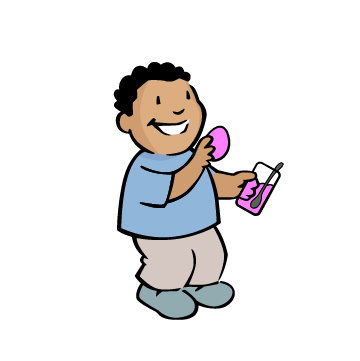Boston Children's Museum
308 Congress Street, Boston, MA 02210
617-426-6500
© Boston Children’s Museum 2025
Website Design by JackrabbitSpring is a time of rebirth and renewal—and eggs! Many animals lay and incubate eggs in the spring, and in some cultures spring is a time in which kids paint, hide and eat lots of eggs. This makes it a great time to not only take a close look at eggs, but also to experiment with some of the things we can do with them. This activity is part of the Incredible Egg series of activities, which are designed to be done during the Spring—start your students off with some of the “egg science” activities, then move on to “egg art”, and finally take the Egg Drop Challenge!
This activity requires some advance preparation from the teacher, but the results are worth it.
Gather materials. Ask a local grocery store to donate onion skins. You will have to chop the cabbage & spinach leaves & other vegetables, defrost blueberries, make coffee. It may be helpful for the children to play around with some dyes that are already made. Try making some dyes ahead of time—this allows you to have some fun with the materials and will help you to help the kids through the activity. Below is the basic procedure for creating the egg dyes:

Ask children if they’ve ever dyed eggs before. What is the dye used to color these eggs made from? What did kids dye eggs or other things with years ago before they could go to the store and buy these artificial dyes? When you think of tie dyeing, you think of bright, fun colors. You may want to mention that the dyes they are about to experiment with are going to be a range of colors, some will be lighter than they expect, but they should have fun creating a range of colors. Explain to the children that they are going to color eggs using natural dyes and ingredients found in the kitchen. Then they will have a chance to create their own dye recipes. An adult will still be needed to supervise the stove or portable burner.
Create your own dyed eggs using these natural materials!
After dyeing one egg, bring your students together to talk about what they discovered. Did anything surprise them? What colors did they try? What colors would they like to try? What would happen if they tried more than one color on an egg?
Have teams create more eggs. Try lots of different colors and combinations—see some of the possibilities below.
Color Glossary:
Natural dyes can sometimes produce unexpected results. Use the following guide to help you achieve the colors you desire:
Some other cool methods:
Onion Skin Eggs
Marbleized Eggs